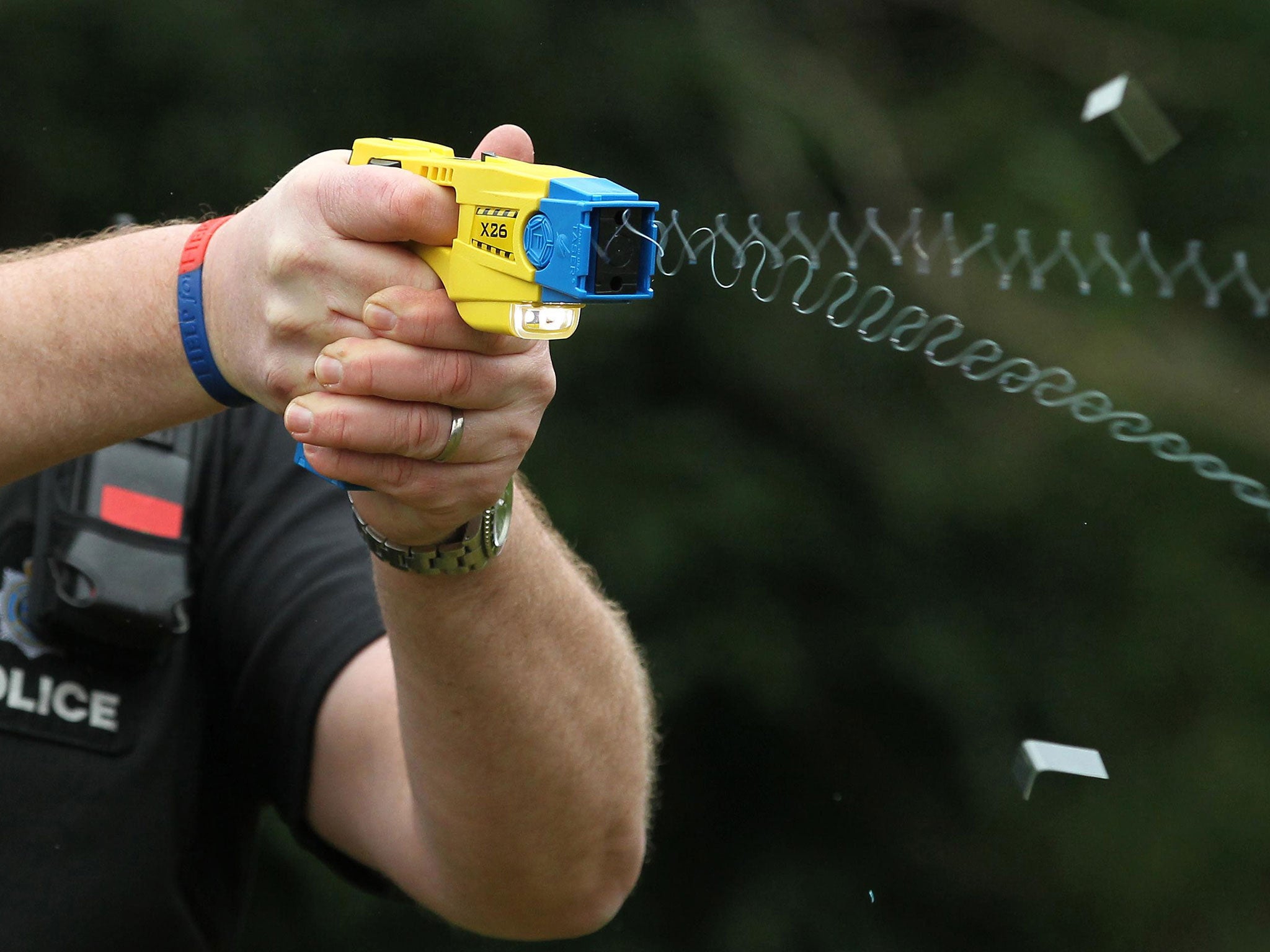Taser use by police rises by 50 per cent in five years, according to Home Office
There are concerns the grim effectiveness of Tasers persuades police officers to use them before batons or simple brute force

The impact of the massive flow of current unleashed by a Taser has been described as “like being shocked by a cattle fence, but 50,000 times stronger”.
The bright-yellow weapons, which have become common in the police armoury, temporarily disable suspects who freeze or collapse as they lose control of their muscles. Because of the extreme pain inflicted by Tasers, officers are instructed to use them as a last resort to restrain violent individuals in the most dangerous situations.
But critics fear that police are increasingly resorting to the controversial technique when less agonising methods of restraint would be equally as effective and more humane.
Their worries appear to be borne out by Home Office statistics which revealed a 50 per cent rise in their use in five years. Police drew Tasers 10,062 times last year in England and Wales and fired them 1,724 times, which are marginal falls since 2013, but still mean that an average of 27 people have Tasers pointed at them each day and four or five are felled by the powerful weapons.
Interactive map showing taser use by Police in England and Wales, 2014. Click on each Police force for detailed statistics
The highest use was in London, where concerns have been raised that people from black or ethnic minority backgrounds are disproportionately tasered.
The Metropolitan Police deployed the stun guns 1,962 times and fired them on 219 occasions. They were used 1,573 times in the West Midlands and 1,447 times in the North-west.
The publication of the statistics follows a landmark inquest this week which raised fresh fears that the guns are far more dangerous than their proponents claim.
The coronor concluded that the death of a 23-year-old Manchester factory worker, Jordan Begley, was partly caused by being hit by a Taser. He died from heart failure two hours after police used a stun gun to disable him.
Previous inquests have failed to establish a link between the weapons and the deaths of Taser targets. They included Andrew Pimlott, a Plymouth man who had doused himself in petrol and burst into flames when he was struck by a Taser. The officer had fired in an attempt to stop him striking a match.
Critics have also raised alarm over the frequency with which Tasers are turned on children. A Freedom of Information request found that in 2013 the stun guns were pointed at 431 children aged between 11 and 17. In response David Blunkett, who authorised the introduction of Tasers as Home Secretary in 2005, has said police need to be trained to use “much more traditional alternatives”.
The National Police Chiefs’ Council insists the weapon’s use has saved many lives, pointing out that their mere presence at a tense incident can resolve it without violence and stressing that the weapons are only fired in 20 per cent of the occasions they are used. However, it acknowledged that the Begley verdict raised safety concerns and called for an independent investigation into their medical effect. It received the backing of the Home Office, although Theresa May’s department also said the weapons were only authorised following extensive tests on their medical side-effects.
Ms May has insisted they are an “important operational tactic” for police, but also last year ordered a review into who they are being used on. She explained: “Just as with stop-and-search, we need to bring proper transparency to these powers.”
Her move was an admission that it is not entirely clear why Tasers are increasingly popular at a time of falling crime – other than that more officers are being trained in their use. The suspicion among critics is that their grim effectiveness compared with batons, CS spray or simple brute force makes them highly attractive to officers in stressful situations.
Will McMahon, the deputy director at the Centre for Crime and Justice Studies in London, which next week stages a discussion on the issue, makes no secret of his alarm at the phenomenon.
He says: “We have survived as a society without the use of Tasers. I can see no justification for them in a country that has unarmed police.”
Subscribe to Independent Premium to bookmark this article
Want to bookmark your favourite articles and stories to read or reference later? Start your Independent Premium subscription today.
